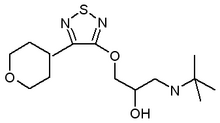THERAPEUTIC INSIGHTS
A look at the glaucoma drugs approved last year and those waiting for approval.
The pharmaceutical companies provided us with some great new drugs in 2001. Now, after roughly 12 months of use, we can start sorting out hype from fact. Fact is, these new drugs have been pretty spectacular in meeting the needs of our glaucoma patients.
They're not perfect, but they do give us new opportunities in treating the glaucoma patient. In this article, we'll take a look at the following classes of glaucoma drugs: prostaglandins, alpha agonists, beta-blockers and docosanoids.
Reviewing the drugs
In studies over the years, timolol maleate 0.5% (Timoptic) has demonstrated that patients who have an intraocular pressure (IOP) of more than 22 mm Hg experience an IOP reduction of 5 mm Hg on average. Keep in mind that this is an average and that you'll see patients who experience no IOP reduction and others who experience a reduction of more than 10 mm Hg.
A 30% reduction in IOP is a good general target, but consider a patient's age and quality of life. You'll find the average range in IOP reduction listed with each of the new medications.
* Isopropyl Unoprostone 0.15% (Rescula). Unoprostone is a docosanoid from Novartis that was approved more than 18 months ago. Here are some facts:
> AVERAGE RANGE IN IOP REDUCTION: modest IOP lowering efficacy, 3 mm Hg to 4 mm Hg IOP reduction.
> TYPICAL DOSING: b.i.d.; appears to have additive effect with other prostaglandin drugs.
> SIZE: 5.0 ml
> DROPS PER BOTTLE: N/A
> STABILITY: 36F to 77'F
> BENEFITS: safe, well tolerated; may improve blood flow.
* Travaprost .004% (Travatan). Travoprost is an Alcon prostaglandin analog.
> AVERAGE RANGE IN IOP REDUCTION: between 6 mm Hg and 8 mm Hg.
> TYPICAL DOSING: q.d.
> SIZE: 2.5 ml
> DROPS PER BOTTLE: 111 drops; 55.5 days per bottle.
> STABILITY: 36 deg F to 77 deg F
> BENEFITS: no refrigeration necessary; possibly more effective in African-American patients (1.8 mm Hg greater IOP reduction in clinical trials); safe and well tolerated; this tool helps control IOP in a patient population that has a high incidence of glaucoma that's often difficult to control.
* Bimatoprost .03% (Lumigan). Bimatoprost is an Allergan prostamide.
> AVERAGE RANGE IN IOP REDUCTION: between 7 mm Hg and 8 mm Hg.
> TYPICAL DOSING: q.d.
> SIZE: 2.5 ml and 5.0 ml
> DROPS PER BOTTLE: 99 drops; 9.5 days per bottle
> STABILITY 69 deg F to 77 deg F
> BENEFITS: doesn't require refrigeration; in studies, up to one-third of patients had a 40% IOP reduction in clinical trials; provides good diurnal control; safe and well tolerated by patients.
A recent 12-month study indicates a 32% IOP reduction (7.9 mm Hg) that remains the same for 12 months. In comparison, timolol had a 5.5 mm Hg IOP reduction during the same period.
* Brimonidine 0.15%, (Alphagan P). Allergan, Inc.'s alpha agonist. Two 12-month clinical studies show that it's comparable to Alphagan but produces fewer negative side effects.
> AVERAGE RANGE IN IOP REDUCTION: 4 mm Hg to 6 mm Hg.
> TYPICAL DOSING: b.i.d.
> SIZE: 5 ml, 10 ml and 15 ml
> DROPS PER BOTTLE: NlA
> STABILITY: 59 deg F to 77 deg F
> BENEFITS: Preserved with Purite .005%, breaks down to NaCl and H2O on exposure to ultraviolet light. Because brimonidine doesn't contain benzalkonium (BAK) chloride, take it into special consideration when treating patients who have an allergic reaction to this; Allergan states 41 % less reactions; and it proves to have neuroprotective capabilities in animal studies.
Potential side effects you may see with Alphagan P include: fatigue, with especially the first few days of use; headache; allergic reaction; redness and sometimes mattering, which may take weeks, months or years to appear, causes no serious damage and takes a few days for the redness to clear after discontinuing the drops; dry mouth; and has a projected allergy rate of 7%.
On their way
You've most likely heard of the glaucoma drugs I've mentioned so far, but two more still wait in the wings. They are:
* Timolol 0.50/fatanoprost .005% (Xalcom). Pharmacia Corporation's new prostaglandin/beta-blocker combination is still in the approvable stages at the FDA.
> AVERAGE RANGE IN IOP REDUCTION: N/A
> TYPICAL DOSING: s.i.d.
> SIZE: 2.5 ml
> DROPS PER BOTTLE: N/A
> STABILITY: N/A
> BENEFITS: Once-a-day dosing makes this drug a convenient alternative.
Once Xalcom makes it to the market, consider its beta-blocking and prostaglandin side effects before prescribing it.
* Levobetaxolol .5% (Betaxon). This is Alcon's levoisomer of betaxolol, but it's not yet available.
> AVERAGE RANGE IN IOP REDUCTION: NIA
> TYPICAL DOSING: b.i.d.
> SIZE: 5 ml, 10 ml and 15 ml
> DROPS PER BOTTLE: NIA
> STABILITY: 39 deg F to 77 deg F
> BENEFITS: selective betablocker with a good safety profile; Alcon feels that it may be more effective than Betoptic S at lowering IOP.
So much to choose from
Twelve months of using these topical glaucoma medications at least gives us an idea of what to expect in IOP reduction and ocular side effects. I know from experience that we'll still find some surprises with these drugs over the next few years.
For now, use what you feel comfortable with and what you think provides your patients with the most benefit. And, as always, keep your eyes peeled for new medications that enter the market.
Coordinated by
Bobby Christensen, O.D., F.A.A.O.
by Bobby Christensen, O.D., Midwest City, Okla.
Dr. Christensen has a partnership practice in Midwest City, Okla. He's a diplomate in the Cornea and Contact Lens Section of the American Academy of Optometry. He's also a member of National Academies of Practice.
Copyright Boucher Communications, Inc. Jun 2002
Provided by ProQuest Information and Learning Company. All rights Reserved



